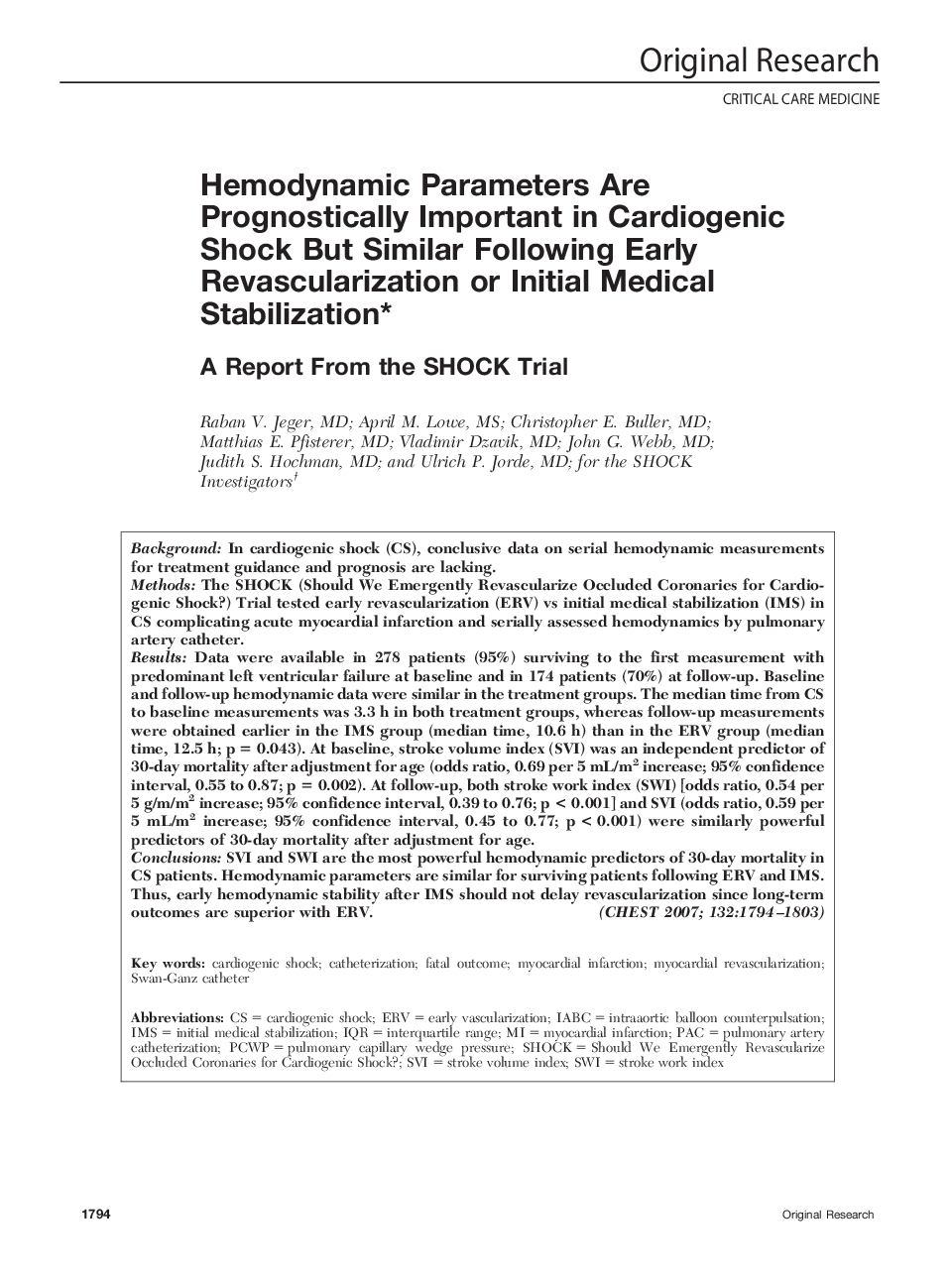| Article ID | Journal | Published Year | Pages | File Type |
|---|---|---|---|---|
| 2904326 | Chest | 2007 | 10 Pages |
BackgroundIn cardiogenic shock (CS), conclusive data on serial hemodynamic measurements for treatment guidance and prognosis are lacking.MethodsThe SHOCK (Should We Emergently Revascularize Occluded Coronaries for Cardiogenic Shock?) Trial tested early revascularization (ERV) vs initial medical stabilization (IMS) in CS complicating acute myocardial infarction and serially assessed hemodynamics by pulmonary artery catheter.ResultsData were available in 278 patients (95%) surviving to the first measurement with predominant left ventricular failure at baseline and in 174 patients (70%) at follow-up. Baseline and follow-up hemodynamic data were similar in the treatment groups. The median time from CS to baseline measurements was 3.3 h in both treatment groups, whereas follow-up measurements were obtained earlier in the IMS group (median time, 10.6 h) than in the ERV group (median time, 12.5 h; p = 0.043). At baseline, stroke volume index (SVI) was an independent predictor of 30-day mortality after adjustment for age (odds ratio, 0.69 per 5 mL/m2 increase; 95% confidence interval, 0.55 to 0.87; p = 0.002). At follow-up, both stroke work index (SWI) [odds ratio, 0.54 per 5 g/m/m2 increase; 95% confidence interval, 0.39 to 0.76; p < 0.001] and SVI (odds ratio, 0.59 per 5 mL/m2 increase; 95% confidence interval, 0.45 to 0.77; p < 0.001) were similarly powerful predictors of 30-day mortality after adjustment for age.ConclusionsSVI and SWI are the most powerful hemodynamic predictors of 30-day mortality in CS patients. Hemodynamic parameters are similar for surviving patients following ERV and IMS. Thus, early hemodynamic stability after IMS should not delay revascularization since long-term outcomes are superior with ERV.
